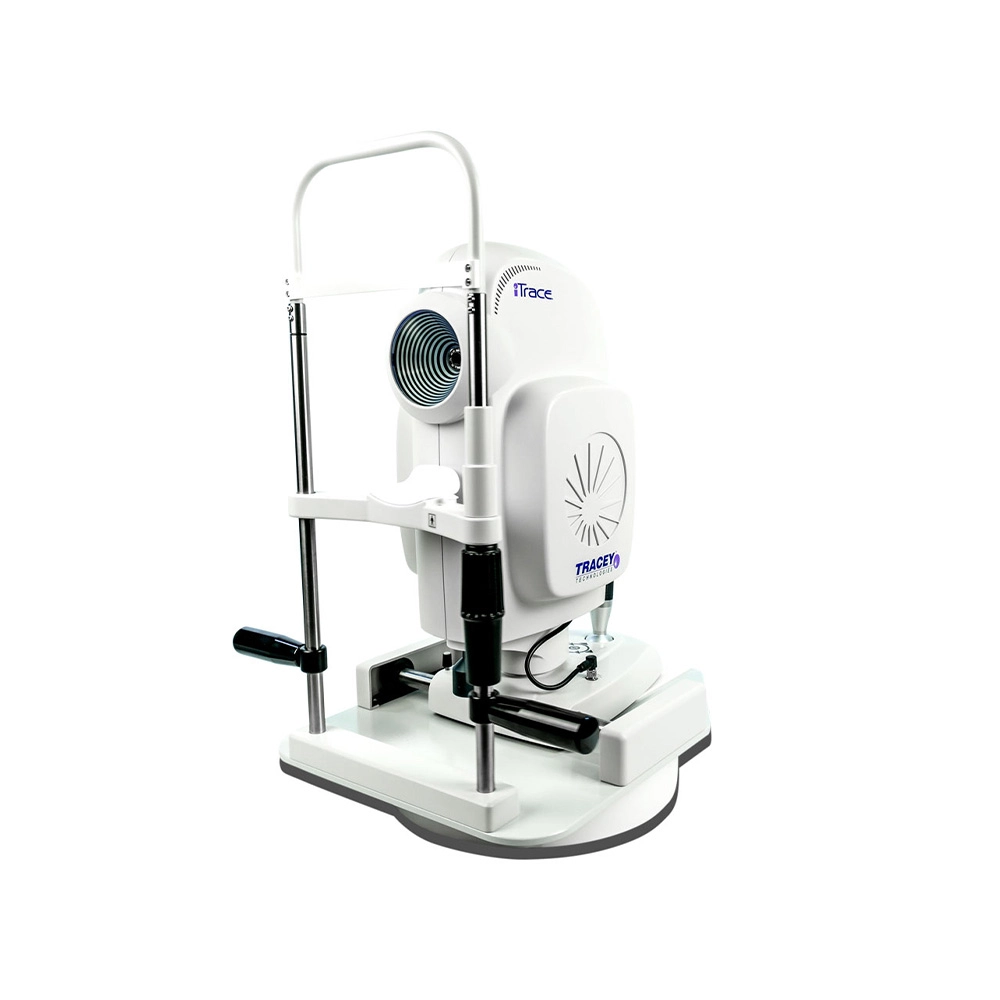iTrace Visual Function Analyzer
The iTrace from Tracey Technologies is a comprehensive analytical tool that offers a unique and profound understanding of the eye’s optical system and its effect on visual function. Its combination of sophisticated diagnostic capabilities and patient-centric features makes it an essential device for CCRS.

The iTrace Visual Function Analyzer, produced by Tracey Technologies, is a revolutionary device that integrates ray tracing aberrometry and corneal topography. It is the first-ever diagnostic machine that offers real-time analysis from a patient’s perspective, providing both objective and subjective data about the visual quality. It is highly effective in diagnosing and treating complex optical conditions, such as aberrations and dysfunctions, and plays a critical role in pre-and post-operative assessments. It’s particularly useful for examining patients who have previously undergone eye surgeries (like LASIK, or cataract surgeries) and expressing the importance of correcting for aberrations.
- iFunction: This unique feature of iTrace allows clinicians to simulate visual outcomes with different lenses or surgical interventions, by providing a comprehensive understanding of the eye’s optical system and its effect on visual function, proving to be an indispensable tool for eye care professionals enhancing communication with patients and their understanding of proposed treatment plans. By simulating how proposed treatments will affect vision, it significantly aids in patient education, increasing comfort and satisfaction with treatment plans.
- Ray tracing technology: The iTrace device uses ray tracing technology to measure the wavefront of the eye. This provides a more accurate and complete assessment of the eye’s optical quality than traditional wavefront aberrometers. The iTrace uses a two-part process to analyze the visual system. First, it identifies the patient’s internal and corneal aberrations by illuminating the eye with an input of 256 light rays, and mapping out their paths as they pass through the optical system. The iTrace then compares the difference of these two sets of data (corneal and internal) to determine the patient’s total visual quality.
